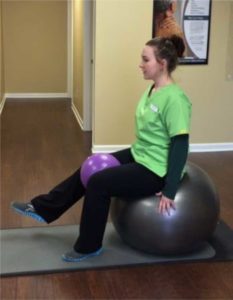What Patellofemoral Pain Syndrome is and What You can do About it
General Information on Patellofemoral Pain Syndrome:

- The patella, or knee cap, sits in a groove in the femur, or thigh bone and glides when the knee is bent or straightened. Several muscles of the leg attach to the patella and help hold it in the ideal place through tension.
- Patellofemoral Pain Syndrome (PFPS) is caused by unequal forces pulling the patella off track and leads to increased compression of tissues behind the patella.
- Signs and symptoms include diffuse pain over the front of knee or underside of kneecap, grinding/cracking (crepitus) when bending/straightening knee and pain with kneeling/stair-climbing/running/jumping/squatting.
- Prevention: alternate high-impact activity with low impact exercise such as swimming or biking, use kneepads with prolonged kneeling, replacing worn shoes and maintaining strength and flexibility in legs and core.
- Shoes should have a supportive insole for proper arch support, a cushioned sole and heels should be less than 2 inches.
 Physical Therapy Can Help You By:
Physical Therapy Can Help You By:
- Recognizing any abnormalities in body mechanics and assessing muscle imbalances or tightness that may be contributing to PFPS.
- Developing a complete plan for stretching and strengthening muscles to keep patella on track.
- Recommending orthotics and ideal footwear to help in your recovery and prevent recurrence.
Exercise Example to try:
- VMO Knee Extension on Ball (pictured above, right): Perform on stability ball (near counter or wall for balance if needed) or perform seated in chair if no ball available. Squeeze towel or small ball between knees throughout. Straighten knee and hold contraction for 3 seconds, then relax. Complete 10 on one leg then switch legs. Repeat 2 times, for a total of 20 knee extensions per leg. Complete twice daily.
Click here for the downloadable version.